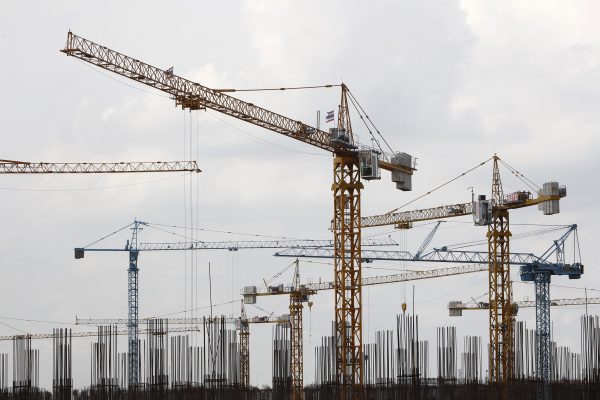These initiatives aim to address the US$40 trillion infrastructure gap in developing countries, yet they also raise geopolitical concerns by seemingly competing with China’s Belt and Road Initiative (BRI). The last thing Southeast Asian governments want is to be caught in a geopolitical crossfire over investment choices.
But recipient countries have more to look forward to than to fear. New Western initiatives can supplement the BRI’s offerings and encourage Beijing to address its shortcomings. Above all, these alternatives offer Southeast Asian governments more political space to choose a path that furthers their developmental and geopolitical needs.
There has been plenty of debate on whether the B3W can compete with the BRI, particularly over the issue of financing. Beijing spent over US$700 billion on contracts and investments in recipient countries between 2014 and November 2020, with the bulk of these investments coming from policy banks such as the China Development Bank. By comparison, Washington and its allies cannot muster similar levels of public funds. Beijing’s increasing focus on health and digital connectivity under the BRI coincides with the B3W’s own goals, offering it an ostensible first mover advantage.
Yet such comparisons overlook the qualitative differences between the initiatives. Analysts note that Washington’s emphasis on social safeguards can be used to differentiate its offerings against Beijing’s, particularly for governments concerned about the political implications of incorporating Chinese surveillance technology in smart city plans.
The B3W’s aim to crowd-in private capital and multilateral funding also deserves a closer look. China’s overseas development spending has been falling since 2016 and it cannot bridge the developing world’s infrastructure gap alone. Though it remains to be seen if the United States will be successful in mobilising private capital, its presence may encourage more states to join. Diversifying a recipient country’s investment sources would not only lessen its vulnerability to disruptions such as pandemics, but also minimise the geopolitical risks associated with choosing a single investor.
Beijing’s forward-looking approach to infrastructure differentiated it from other investors. Where others would scrutinise feasibility reports, BRI projects have been motivated by the mantra: ‘if you want to get rich, build a road first’. Chinese investors have thus ventured into countries and places that others deem too risky to invest in.
Yet, this approach has also incurred its share of problems. In Malaysia, the US$10.5 billion Melaka Gateway project was supposed to create a bustling tourist destination and mega-port, yet the project idled for years before getting scrapped in November 2020. The problems that plagued it were both political and economic. Local political elites were not invested in the project and there were concerns it would cannibalise the underutilised capacity of Malaysia’s other ports.
A similar problem plagued Sri Lanka’s Hambantota Port. Constructed despite negative feasibility studies, the port ended up heavily underutilised and was leased to China after Sri Lanka was forced to renegotiate its debts.
These problems have not gone unnoticed by Beijing and falling overseas development finance expenditures suggest that it is becoming more discerning in its investment decisions. New Western initiatives could also expedite this process, as Beijing seeks to distance itself from criticism of past projects and compete with other offerings. While the rejection of less feasible projects may hinder development plans, Southeast Asia stands to benefit from a more cautious approach that lessens the likelihood of white elephant projects.
Granted, there is no guarantee that the socially sensitive Western initiatives will be warmly welcomed. Washington and Brussels incorporated social notions of gender equality into their initiatives, while also prioritising values such as transparency and anti-corruption. These stricter guidelines could deter some governments. As one diplomatic anecdote goes, ‘Chinese companies make offers recipient countries cannot refuse, while Europeans make offers they cannot understand’.
But Southeast Asian governments can chart a neutral path. In Indonesia, China won the contract for the Jakarta-Bandung High Speed Rail project in 2016, but Jakarta announced in 2020 that the line would be extended to the East Javan city of Surabaya through a collaboration with Japan. A similar situation occurred in the Philippines, with both Japan and China allocated parts of the Mindanao Railway project. Even in Cambodia, it is unlikely to be a coincidence that Phnom Penh’s Japanese and Chinese friendship bridges are built next to each other.
Ultimately, Southeast Asia stands to benefit from the addition of new actors to its infrastructure space. While there will be tensions, a wider variety of choices will allow regional governments to employ flexible diplomacy to fuel their development while securing their sovereignty.
Kevin Chen is a researcher in the Asia Competitiveness Institute at the Lee Kuan Yew School of Public Policy, National University of Singapore.

